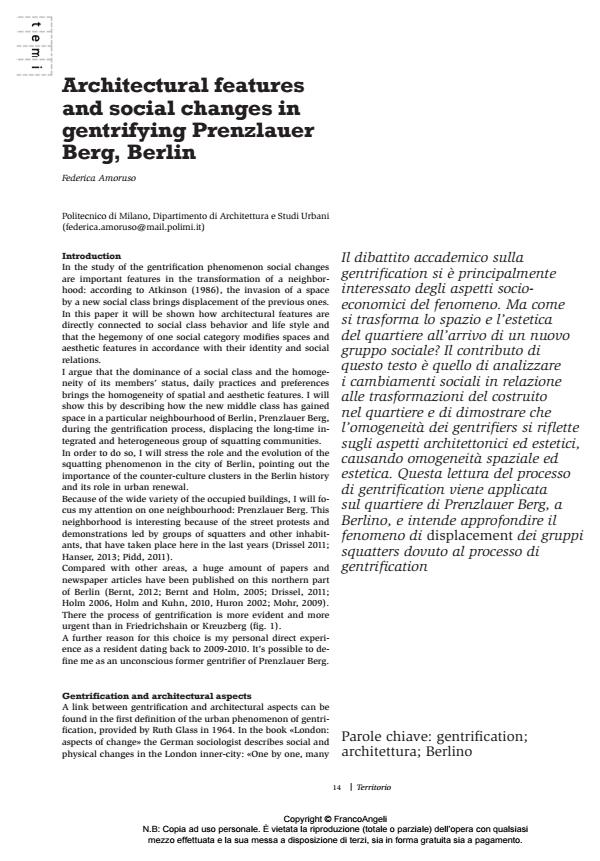Architectural features and social changes in gentrifying Prenzlauer Berg, Berlin
Titolo Rivista TERRITORIO
Autori/Curatori Federica Amoruso
Anno di pubblicazione 2015 Fascicolo 2015/73
Lingua Inglese Numero pagine 9 P. 14-22 Dimensione file 276 KB
DOI 10.3280/TR2015-073003
Il DOI è il codice a barre della proprietà intellettuale: per saperne di più
clicca qui
Qui sotto puoi vedere in anteprima la prima pagina di questo articolo.
Se questo articolo ti interessa, lo puoi acquistare (e scaricare in formato pdf) seguendo le facili indicazioni per acquistare il download credit. Acquista Download Credits per scaricare questo Articolo in formato PDF

FrancoAngeli è membro della Publishers International Linking Association, Inc (PILA)associazione indipendente e non profit per facilitare (attraverso i servizi tecnologici implementati da CrossRef.org) l’accesso degli studiosi ai contenuti digitali nelle pubblicazioni professionali e scientifiche
Il dibattito accademico sulla gentrification si è principalmente interessato degli aspetti socioeconomici del fenomeno. Ma come si trasforma lo spazio e l’estetica del quartiere all’arrivo di un nuovo gruppo sociale? Il contributo di questo testo è quello di analizzare i cambiamenti sociali in relazione alle trasformazioni del costruito nel quartiere e di dimostrare che l’omogeneità dei gentrifiers si riflette sugli aspetti architettonici ed estetici, causando omogeneità spaziale ed estetica. Questa lettura del processo di gentrification viene applicata sul quartiere di Prenzlauer Berg, a Berlino, e intende approfondire il fenomeno di displacement dei gruppi squatters dovuto al processo di gentrification
Parole chiave:Gentrification; architettura; Berlino
Federica Amoruso, Architectural features and social changes in gentrifying Prenzlauer Berg, Berlin in "TERRITORIO" 73/2015, pp 14-22, DOI: 10.3280/TR2015-073003